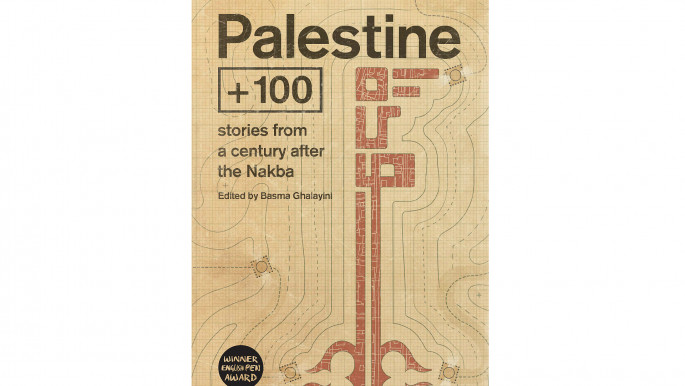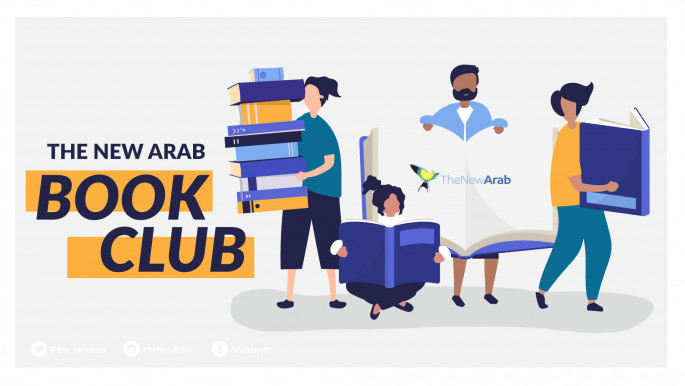An encapsulation of diverse artistic expression in Arabicity: Contemporary Arab Art
Colonial impositions and foreign interventions in the Middle East have wrought changes that impacted Arab societies, as the people have been forced to navigate between extremities, or dissonances, as a result of violence.
In her essay, editor Rose Issa describes the collection of artworks in the book thus: "The artworks reflect complex relations between East and West, past and present, fiction and reality, and examine the encounter between these worlds … From chaos, the have discovered what endures."
The artworks featured in this book are bound by common themes, notably identity and displacement.
From Palestinian dispossession by Zionist colonisation, to the war in Iraq and the repercussions of the Arab Spring, artists have explored the dynamics of what was left after the ravaging violence, as well as their struggles in the perpetually changing political landscape.
 |
|
| Read more from The New Arab's Book Club: Palestine +100: Stories from a century after the Nakba |
Political failures and Western intervention have triggered an outpouring of artistic expression that will not be contained.
This artistic consciousness is summed up in Georges Corm's essay: "What the Western powers did not succeed in achieving, however, was suppressing cultural activity in the Arab World."
In suffering dispossession and the destruction of their region, Arab artists have lived and experienced contradictions in coming to terms with their changing landscapes and lives.
Bridging the gap between the past and the evolving present is at once a question of identity and how this identity relates to realities in which the artist has no other option but to remember.
Michket Krifa notes, "The acts of remembrance become acts of resistance, replacing the spell of loss and chaos with the power of imagination and creativity."
In this collection, the artists' voyage through vulnerability is evident.
 |
The contrast between the perils faced by refugees and the material used for his depictions – steel – reflects not only the harsh conditions but also Palestinian resilience |  |
Palestinian artwork, for example, such as that of Abdul Rahman Katanani, explores the realities of Palestinian refugees, using recycled material. The contrast between the perils faced by refugees and the material used for his depictions – steel – reflects not only the harsh conditions but also Palestinian resilience.
After Six Days & We Will Be Back, Inshallah is a poignant installation that asserts the temporary concept of exile as perceived by Palestinian refugees, only to discover their leaving became a forced, permanent inscription.
Taysir Batniji's photography of a glass key set – his personal key ring from Gaza – is a reflection of the stringent movement suffered by Palestinians in the enclave: permanently displaced, permanently incarcerated and, in the rare instance a departure is possible, a permanent absence.
Lebanese artist Ayman Baalbaki's art speaks of a life that has been tarnished, or shaped by war: "I am part of a generation of artists and writers who lived through twenty years of war and have nothing to say other than war."
His installations depict the urgency of flight due to permanently volatile situations – how much of home can a fleeing individual or family bear to take with them?
 |
I am part of a generation of artists and writers who lived through twenty years of war and have nothing to say other than war |  |
Taghreed Darghouth's acrylic paintings of nature and surveillance are reminiscent of how people navigate landscapes and their use.
A series of paintings depicting the Palestinian olive tree is as much about heritage as it is about loss and violence. Her series of art depicting surveillance equipment acquaint the viewed with hidden forms of violence – the detachment inherent in technology and its promotion of oblivion.
Iraqi-Canadian artist Mahmoud Obaid's sculpture, Operation Freedom Iraqi Family, portrays the fragmentation caused by war and its repercussions on Iraqis. A family, displaced and maimed, limbs missing, is made out recycled weapons. In displacement, the family carries with it not only its memories, but those inflicted by foreign intervention.
Ayad Alkadhi's mixed media paintings depict several strands of displacement. The cacophony of materials used, as well as the drawings of several objects – body parts alongside toys and tents – conveys the displacement of Iraqis and invites the observer to relate to the images. How does one relate to displacement from afar? What is the impact of displacement on someone untarnished by war?
Moroccan artist Batoul S'himi's carvings on kitchen objects is particularly intriguing. Her art is a simmering implosion that reflects both the role of women in society, as well as international politics.
"I carve maps on these domestic objects, to expose the insanity of international relations and treatment of the environment."
What really depicts the alienation and anonymity caused by war, however, is the work of Syrian artist Khaled Barakeh, in which photographs of Syrian victims were edited to remove all human recognition, leaving only a white, human shaped form. In eliminating a source of pain, the viewer is disturbed by the anguish in the background and left yearning to connect with who was erased.
Arabicity not only encapsulates diverse artistic expression on similar themes. It also leaves the viewer pondering the fine line between visibility and oblivion; the latter, unfortunately reinforced were it not for timely reminders such as this book.
Ramona Wadi is an independent researcher, freelance journalist, book reviewer and blogger specialising in the struggle for memory in Chile and Palestine, colonial violence and the manipulation of international law.
Follow her on Twitter: @walzerscent




![sudan women [getty] sudan women [getty]](/sites/default/files/styles/image_330x185/public/media/images/5019D7F4-52AF-4377-8A05-885D27476479.jpg?h=d1cb525d&itok=tKXV7r-W)